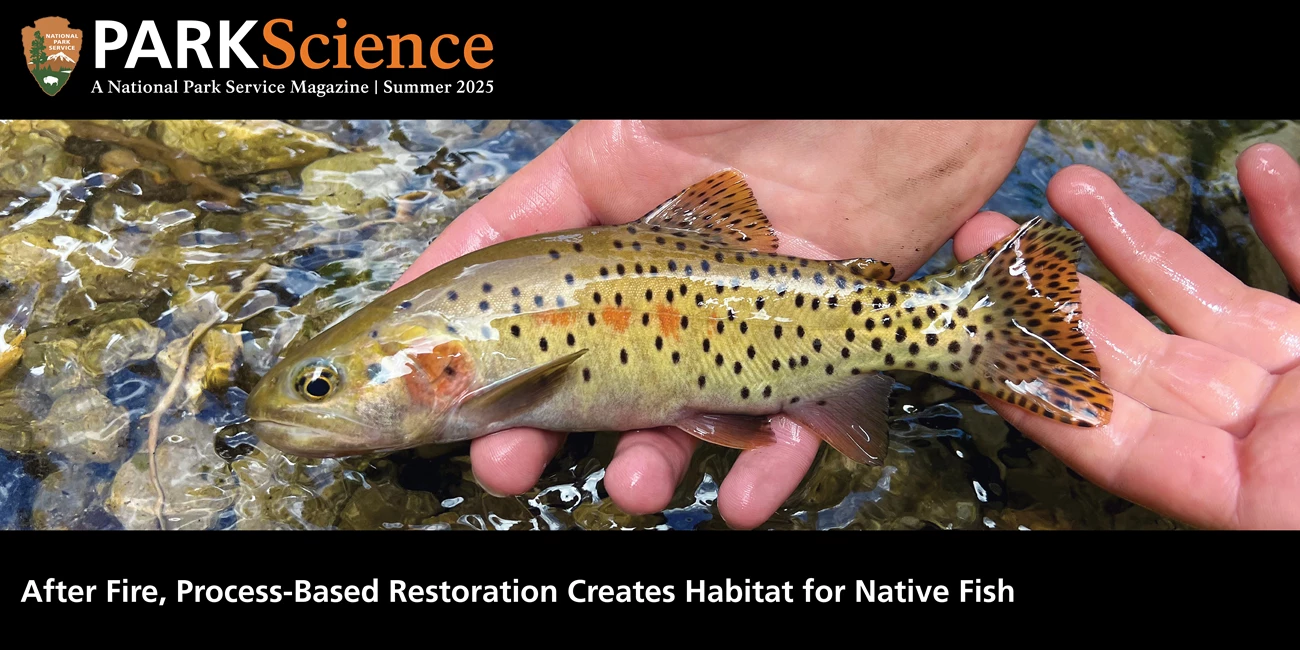
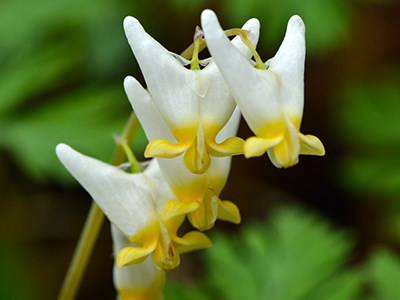
NPS / A. Armstrong
From the Editor
Water, Wildflowers, Fire
In this issue, we highlight the work of park and partner scientists who study rivers and other aquatic environments. You'll also find tales of hidden places and strange, wonderful creatures, and why it matters when wildflowers bloom. Rounding out the issue is the second installment of our new Research Roundup section.
Podcasts

Graphic: NPS. Photo: NPS / Justin Radford
Places You Might Not Know About
A Landmark Program Celebrates a Milestone
Hear from program managers Heather Eggleston, Laurie Lee Jenkins, and Deb DiQuinzio how the National Natural Landmarks Program works to support cutting-edge science. Learn about the Ice Age Floods National Geologic Trail and other amazing places. Hosted by Kass Bissmeyer and Sarah Sparhawk, this episode first aired in the summer 2022 issue of Park Science magazine as part of the retired "Park Science Celebrates!" podcast series (18 minutes).
The Research Roundup
Short summaries of work published elsewhere

Seymoure and others. 2025. Global artificial light masks biologically important light cycles of animals. Frontiers in Ecology and the Environment e2832.
Spring and Summer Papers
Here are synopses of just a few of the many peer-reviewed journal papers authored by National Park Service scientists in the first half of 2025.
In Brief

NPS / Mark Lellouch
Remote Sensing
New Research: Images of Rapids Can Help Measure River Flow
A new technique uses critical flow theory to estimate river discharge from Google Earth images. The results accurately match on-the-ground measurements.
By Brooke Bauman, Carl Legleiter, and Christy Leonard
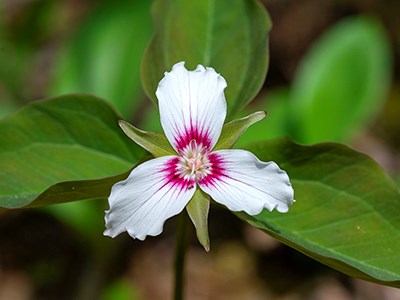
Appalachian Mountain Club / Madelyn Wood
Phenology
Spring Is Now Earlier on the Appalachian Trail, Study Reveals
A study of trees and wildflowers along the Appalachian National Scenic Trail used the largest crowd-sourced dataset of its kind. It showed that spring is arriving sooner, especially in places like New England. Pollinators may find it hard to catch up.
By Jordon Tourville
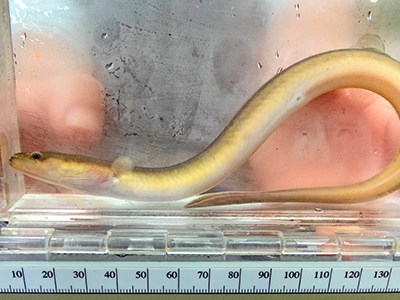
NPS
Rivers and Streams
A Fish Study's Promising Results Highlight Parks' Role in Conservation
Protected areas don’t always achieve their conservation goals. Here’s one case where they do.
By Caleb J. Tzilkowski
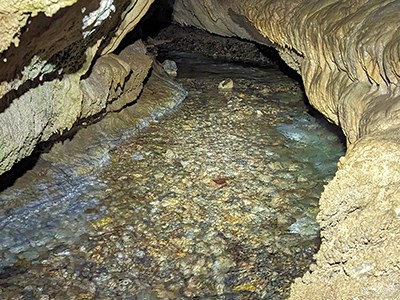
NPS / Sierra Heimel
Dye Tracing
Secrets of the River Styx: Tracking an Underground Waterway
America’s only congressionally designated wild and scenic underground river is notoriously hard to study. A team of scientists recently figured out a way.
By Sierra Heimel
Picture This
The stories behind extraordinary images and videos from the practice of park science
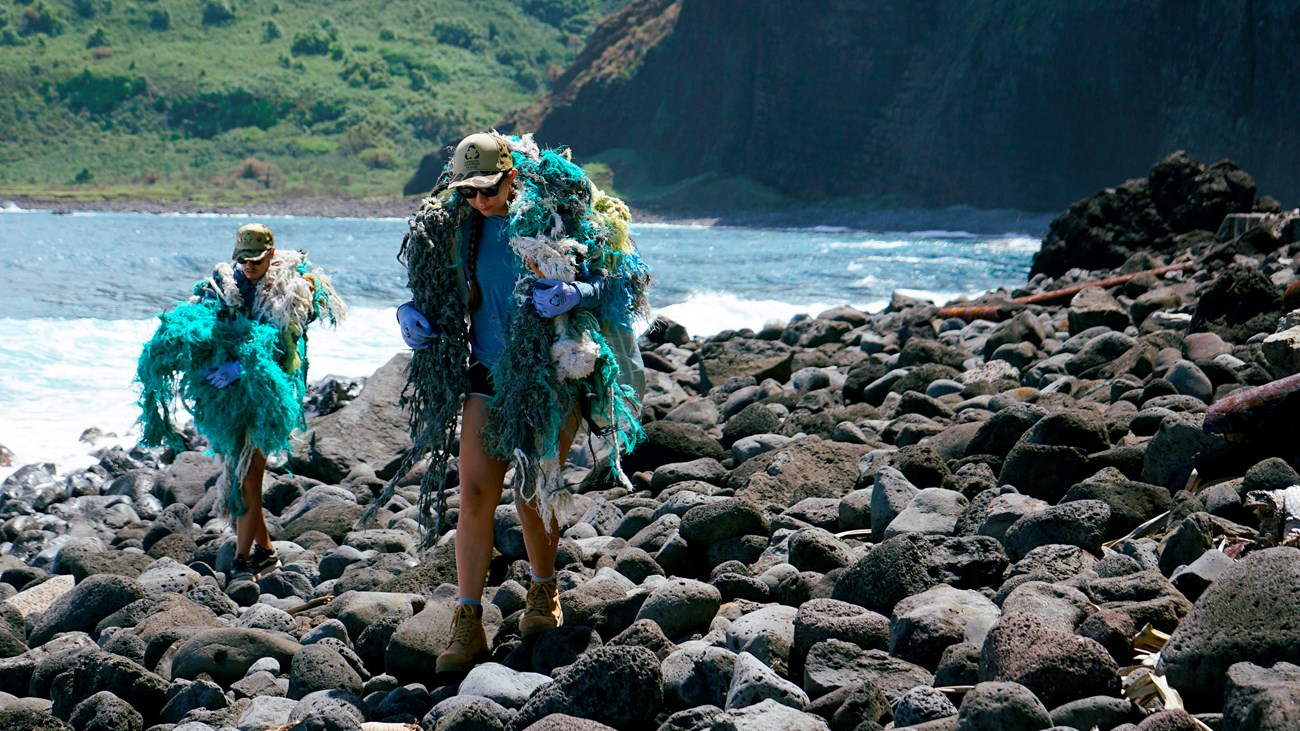
A study of marine debris on Kalaupapa’s coastline reveals what it is and where it came from. It’s an important step.
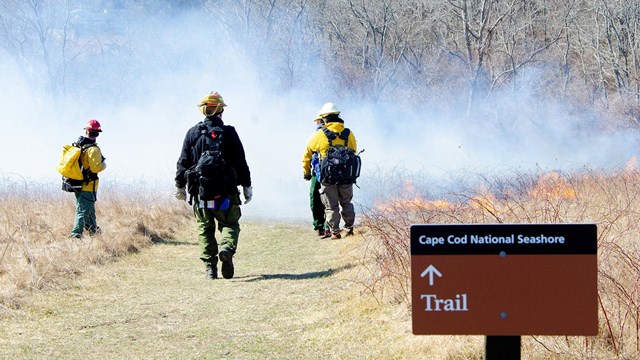
On hold since 2022, controlled burns have returned to Cape Cod National Seashore. Controlled burns reduce fuels and help protect resources.
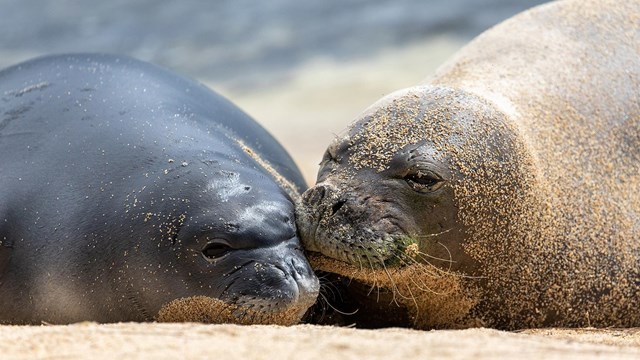
On the Hawaiian island of Moloka‘i, a remote community helps monitor monk seals.
Perspectives

Chandler Hubbard
Visitors
The Celebrity Effect: How Famous Wildlife Can Lead to Risky Behavior
Wild animals who become internet sensations can be effective ambassadors for conservation. But they may also detract from broader management goals, like keeping visitors safe.
By Todd Cherry, Chandler Hubbard, and Lynne Lewis
Features

NPS
Mimicking Nature
After Fire, Process-Based Restoration Creates Habitat for Native Fish
The Strawberry Fire devastated Bonneville cutthroat trout populations in a Great Basin stream. By mimicking nature, scientists are helping this ancient fish make a comeback. They’re also hoping to encourage beavers—those skilled ecosystem engineers—to return.
By Scott Shahverdian and Meg Horner
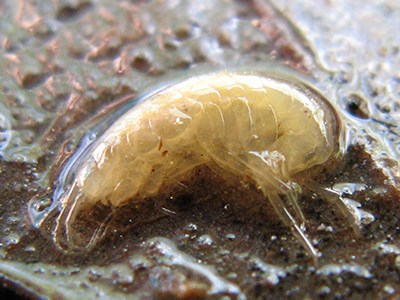
© William K. Jones. Used with permission.
Hidden Wonders
New Species of Eyeless Crustaceans Discovered Near Busy City Streets
We still know little about the myriad forms of life just below our feet, even in highly urban areas, and what we could learn from them.
By David C. Culver, Mikaila Milton, and Elizabeth Burch
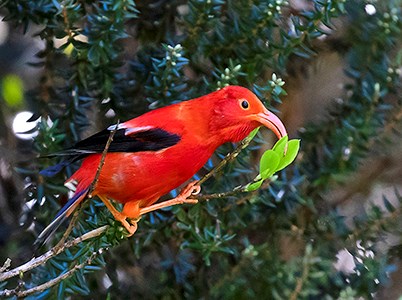
NPS / Janice Wei
Race Against Time
How Moloka‘i’s Remarkable Forest Birds Lost Out to Invasive Species
Many of the wondrously unique native birds of the Hawaiian island of Moloka‘i are now extinct or extirpated. National Park Service scientists and partners are trying to help those that remain.
By Seth Judge
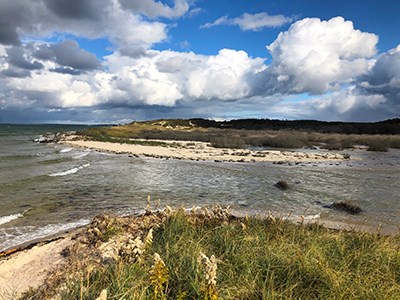
NPS
Breached Beaches
Study of Macroinvertebrates Finds Emerging Resilience After Massive Coastal Breach
Seawater blasted through Duck Harbor beach dunes on Cape Cod in January 2021 and became a periodic part of the coastal landscape. The landscape is adapting.
By Kaitlyn Button
About This Issue
Last updated: September 12, 2025
